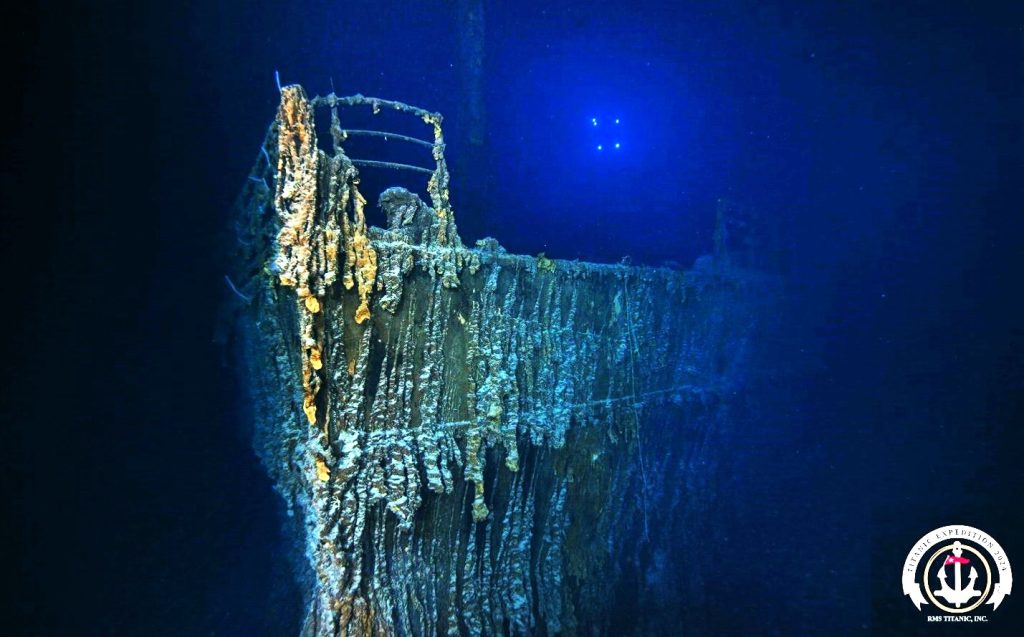RMS Titanic, the company in charge of the salvage rights to the Titanic shipwreck, conducted a recent underwater survey revealing the deterioration of the ship’s iconic bow as well as the discovery of a long-sought statuette. The 20-day expedition in July and August was the first to provide a close look at the 112-year-old wreck since the OceanGate tragedy of the previous year. The bow of the ship was found to be missing a 15-foot section of railing, likely due to corrosion of the metal. This deterioration has highlighted the ongoing challenge of preserving the Titanic’s legacy.
One of the major highlights of the recent expedition was the discovery of a 2-foot-high statuette known as the “Diana of Versailles”, which was once housed in the Titanic’s First Class Lounge. The statue, a depiction of a Greek goddess, was thrown from the ship during its sinking in 1912. Thought lost forever, the statue was spotted in video footage from a previous survey, leading to its location and retrieval during this year’s expedition. The find of the Diana statue was a significant moment for the RMS Titanic team, showcasing the delicate balance between preservation and decay at the wreck site.
The loss of the Diana statue and the deteriorating condition of the Titanic’s bow railing underscores the challenges of maintaining the wreck site and preserving its historical significance. The latest survey by RMS Titanic involved the use of underwater robots to capture over 2 million high-resolution images and videos of the site, as well as mapping the wreck and surrounding debris field using advanced technologies. The data collected will be analyzed for scientific purposes and to identify artifacts at risk of further damage that may be safely recovered in future expeditions.
The tragic history of the Titanic, with over 1,500 people perishing in the shipwreck, continues to captivate public interest and drive ongoing efforts to study and preserve the wreck site. The latest findings by RMS Titanic shed new light on the condition of the ship after more than a century on the ocean floor. The discovery of the Diana statue and the missing section of the bow railing serve as reminders of the fragility of the wreck and the importance of continued monitoring and preservation efforts.
The RMS Titanic team expressed a mix of emotions at the results of the recent expedition, celebrating the discovery of the Diana statue while lamenting the loss of parts of the ship’s structure due to decay. The ongoing commitment to preserving the Titanic’s legacy remains strong, as researchers and experts work to document and protect the wreck site for future generations. The data collected during the survey will provide valuable insights into the condition of the wreck and guide future expeditions aimed at safeguarding the artifacts and history of the Titanic.
Overall, the recent survey of the Titanic shipwreck site conducted by RMS Titanic has provided new insights into the deteriorating condition of the iconic vessel, as well as the discovery of a long-lost statuette. The findings highlight the ongoing challenges of preserving the Titanic’s legacy and the delicate balance between decay and preservation at the wreck site. The data collected during the expedition will be used for scientific analysis and to guide future efforts to protect and study this significant piece of maritime history.


